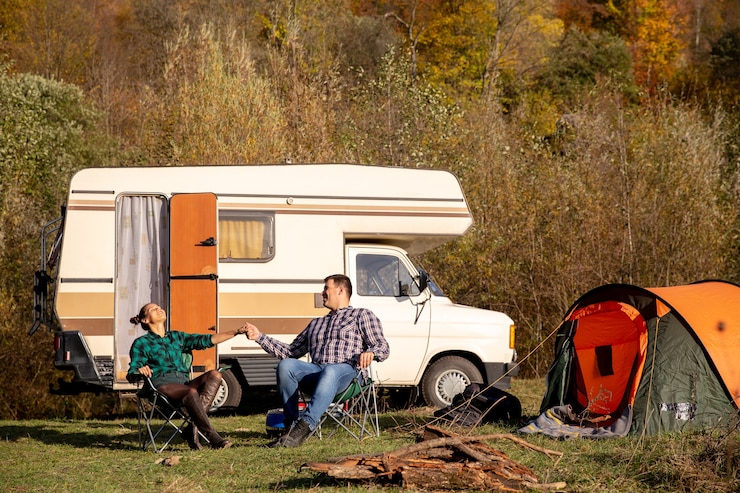
1. **A Camper’s Guide to 10 Unique Ways to Sleep Under the Stars**
2. **From Tents to Trailers: 10 Camping Styles Every Outdoor Lover Should Try**
3. **Exploring the Great Outdoors: 10 Camping Styles to Know**
4. **10 Distinct Camping Experiences for Every Kind of Adventurer**
5. **The Many Faces of Camping: 10 Styles Worth Experiencing**
6. **10 Ways to Camp That Go Beyond the Basics**
7. **Camping, Your Way: 10 Approaches to Outdoor Living**
8. **10 Camping Styles That Redefine Roughing It**
9. **From Rustic to Refined: 10 Camping Types to Explore**
10. **10 Outdoor Getaway Styles Every Camper Should Experience**
Let me know if you’d like the tone to be more formal, playful, or tailored to a specific audience!
Camping is a great way to take a break from the daily grind and enjoy a simpler, more peaceful lifestyle, even if just for a little while. Over the years, it’s evolved into many different styles, each offering a unique experience. Here’s a look at ten of the most popular types of camping that every outdoor enthusiast should know.
**Tent camping** is the classic go-to. You drive to a campsite, set up your tent, and spend a few nights surrounded by nature. Most of your time is spent hiking or exploring, while the tent is mainly for sleeping and storing your gear. Some seasoned campers prefer to pitch their tents in more remote areas, away from the crowds. Tent camping is budget-friendly and ideal for beginners, couples, or families. When choosing a tent, think about how many people are going and what the weather will be like. For summer trips, a tent with a screen room is a great option—it lets in sunlight while keeping bugs out.
**Backpacking** takes things up a notch. Instead of staying in one place, you carry all your gear on your back and hike from one spot to another, setting up camp wherever you stop for the night. It’s perfect for those who love adventure and don’t mind roughing it. You’ll need to be in good shape and comfortable being self-reliant, as you’ll be on the move and away from the usual comforts.
**RV camping** is a more comfortable option. You get the outdoor experience without giving up modern conveniences like a bed, kitchen, and bathroom. It’s great if you’re not into sleeping in a tent or dealing with unpredictable weather. The downside? RVs can’t go everywhere, so you’ll need to park and explore on foot or by bike.
**Glamping**, short for glamorous camping, is all about luxury in the great outdoors. Think treehouses, eco-lodges, or mountaintop teepees. It’s perfect if you want to enjoy nature without sacrificing comfort.
**Survival camping** is for the truly adventurous. The goal is to head into the wild with minimal supplies and rely on your survival skills to make it through. It’s not for beginners—you’ll need to know how to find food and water, build shelter, and handle emergencies.
**Primitive camping** is a step down from survival camping. You still bring a tent and some basic supplies, but you skip the usual campsite amenities. You’ll need to cook your own meals, find water, and manage without bathrooms or electricity. It’s a great way to test your self-sufficiency without going completely off the grid.
**Car camping** is one of the easiest and cheapest ways to camp. If you have a hatchback or SUV, just drive to a scenic spot, fold down the seats, and set up a cozy sleeping area with a pad and some blankets. It’s not fancy, but it gets the job done and doesn’t require much gear.
**Canoe camping** is like backpacking, but on water. You pack your gear into a canoe or kayak and paddle from one campsite to the next. It allows you to carry more supplies and reach remote areas that are hard to get to on foot. Just be cautious—bad weather can make water travel risky.
**Overlanding** combines camping with off-roading. Using a 4×4 vehicle, you travel through remote areas and set up camp along the way. These trips usually last several days and cover long distances, offering a mix of adventure and exploration.
**Winter camping** isn’t for everyone, but it can be incredibly rewarding. With fewer bugs and crowds, you get a peaceful, snowy escape. However, it requires serious preparation—warm clothing, a sturdy tent, winter sleeping bags, and the ability to stay warm and safe in freezing conditions. You’ll also need to know how to find water, cook, and build a fire in the cold.
Each type of camping has its own appeal and challenges. Some, like winter or survival camping, demand more skill and preparation, so it’s important to choose the one that matches your experience level. No matter which style you go for, having the right gear is essential. Make sure to pack cooking tools, reliable lighting, navigation aids, and communication devices like a phone or emergency radio. Being well-prepared can make all the difference in your outdoor adventure.